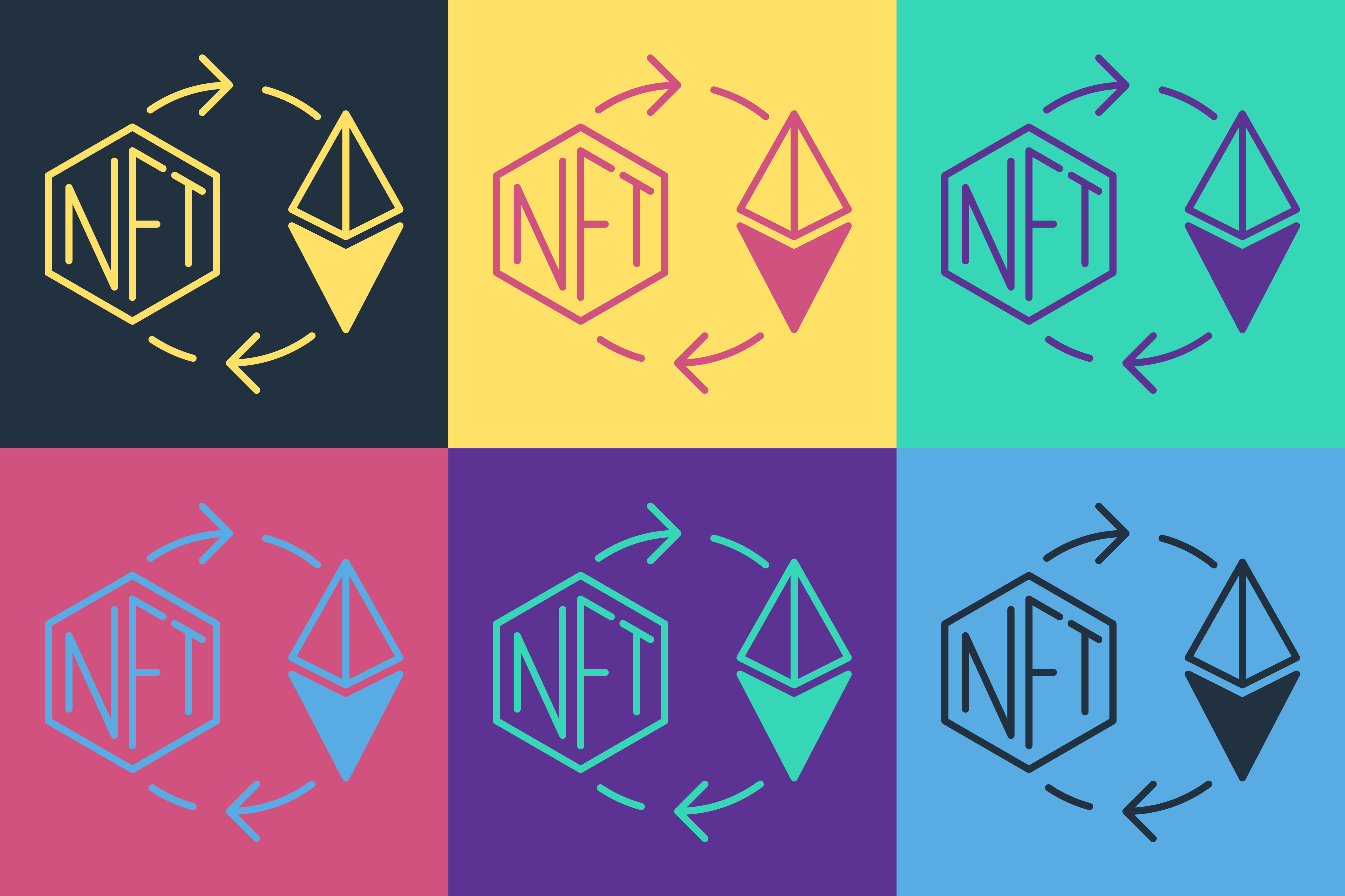What Are the Different Types of Blockchains? 4 Types of Blockchains Explained
Did you know – there are different types of blockchains? Most people are familiar with public blockchains because Bitcoin is a public blockchain. But there are also several other types of blockchains being used – and not just in crypto!
What are the different types of blockchains? To help you become more acquainted with blockchain technology and how it works, we’ve put together this guide to the different types of blockchains.
With the help of this guide, you’ll be able to better understand crypto projects. More importantly, you’ll have a deeper understanding of blockchain technology and how it will change the world.
Ready to learn more about the different kinds of blockchains? Let’s go!
Here’s what we’ll cover.
What is blockchain technology?
How many types of blockchains are there?
What are the different types of blockchains?
Public vs Private Blockchain
Hybrid Blockchain vs Consortium Blockchain
Permissionless vs. Permissioned Blockchains

What is blockchain technology?
First thing’s first – what is blockchain technology? For a detailed guide to blockchain technology, check out our Simple Guide to Blockchain.
To get you started, here’s a quick explanation:
A blockchain is similar to a database. But, instead of data being stored in tables, blockchain data is stored in blocks. These blocks are “chained” together in chronological order. Once a new block is filled it is chained to the one before it.
Also, rather than data being stored on one server in a single location (like a database), a blockchain and its data are stored on numerous computers throughout the world.
Each computer that participates in processing, verifying and storing data is known as a node. Remember this term (i.e. node), as it will come up in our discussion below.
Overall, you can think of a blockchain as a distributed database that stores info in blocks.
How many types of blockchains are there?
There are 4 different types of blockchains.
Each type of blockchain has unique advantages, disadvantages, and use cases. As a result, which type of blockchain is best depends on how it is being used and who will be using it.
Let’s take a closer look at the different types of blockchains.
What are the different types of blockchains?
So, what are the different types of blockchains? The 4 different types of blockchains are:
- Public blockchain
- Private blockchain
- Consortium blockchain
- Hybrid blockchain
Here’s how each type of blockchain works, as well as its advantages, disadvantages, and use cases.
1. Public Blockchain
What is a public blockchain?
A public blockchain is a permissionless distributed ledger that is accessible to everyone. This means that anyone (with an internet connection) can become an authorized member of the network (i.e. a node). As a member, a user can participate in network activities, including sending, receiving, verifying, accessing, and auditing transactions, etc.
Here’s how a public blockchain works.
By nature, public blockchains are decentralized. This means that no central authority has control over the network. Instead, public blockchains are governed by communities and all members work together to ensure the blockchain is accurate and secure.
Data stored on a public blockchain is not stored in one place. Instead, it is distributed across a network of computers (referred to as nodes). To process and verify new entries, public blockchains use something called a consensus mechanism. This means that, for a new transaction or “entry” to be added to the blockchain, blockchain members must agree on whether the new data is valid. This helps prevent inaccurate and falsified information.
The two most common consensus mechanisms are proof of work (PoW) and proof of stake (PoS).
Public Blockchain Examples
The best-known examples of public blockchains include:
- Bitcoin
- Ethereum
Advantages of Public Blockchain
Public blockchains have many advantages. Some of the most notable benefits of public blockchains include:
- Trust – the beauty of a public blockchain is that processes that guarantee trust are built right in. For instance, public blockchains that use proof-of-work consensus mechanisms are nearly impossible to maliciously alter. This is because no one person has complete control over the blockchain. Instead, numerous computers work together to process, verify and record transactions. This means that someone would need to take control of more than 50% of all the computers in the network to successfully make a fraudulent entry. Thus, no individual computer needs to be trusted – as the whole community works together to ensure trust.
- Transparency – as the name suggests, a public blockchain is completely transparent to the public. This means that anyone can view the data on a public blockchain, as well as participate in network activities. And, if a public blockchain is open-source, the behind-the-scenes source code can also be viewed by anyone. In addition, open-source blockchains allow anyone to propose changes to the code. This allows for complete transparency.
- Security – public blockchains are quite secure. Again, this is thanks to their innovative consensus mechanisms. To falsify information on a public blockchain, a hacker would need to control 51% (or more) of the computers on the network. This is difficult to do, especially with a large network. Thus, the larger the network, the harder it is for hackers to falsify data. This makes large public blockchain networks, like Bitcoin, very secure.
Disadvantages of Public Blockchains
Like all types of blockchains, public blockchains also have some disadvantages. The most important drawbacks to consider include:
- Speed (i.e. lower TPS) – public blockchains can be slow. Especially large public blockchains like Bitcoin. This is because the more nodes that participate in a network, the longer it takes to verify transactions. Hence, fewer transactions per second. Think of it like this – if five people needed to review a Visa statement and verify each transaction it wouldn’t take too long. But, if 500 people had to review a statement and agree that all the transactions on it were legit, it would take a lot longer. This is exactly what happens with large public blockchains.
- Scalability – the bigger a network gets (and the more users it has), the slower it gets. Therefore, scaling a public blockchain can be difficult.
- Control – as you now know, public blockchains are completely open and transparent. In some cases, this is a benefit. However, for organizations that require a certain degree of privacy, this is a disadvantage. That’s because a company cannot restrict access to files or limit certain people from using a public blockchain.
Public Blockchain Use Cases
Public blockchains have many use cases. That said, this type of blockchain is best for organizations that value transparency.
Some possible uses for public blockchain include:
- Real estate – for example, validating and storing public property ownership records.
- Charities – charitable organizations can use public blockchains to show how donated funds are allocated.
2. Private Blockchain
What is a private blockchain?
A private blockchain is a blockchain that is only available to certain users. Unlike a public blockchain, only verified individuals/computers can join and participate in network activities.
Here’s how a private blockchain works.
A private blockchain operates just like a public blockchain, using distributed ledger technology to process and store data. However, unlike a public blockchain, a private blockchain is not decentralized.
In most cases, private blockchains are centralized. This means that only one individual (or group of individuals) can edit, delete and override entries. As a result, the security and accessibility of the network are controlled by the organization(s) in charge.
Private blockchains are also known as managed, permissioned or enterprise blockchains.
Private Blockchain Examples
The best-known examples of private blockchains include:
- XRP
- Hyperledger
Large companies like Walmart also use private blockchains for various purposes, including tracing the origins of their products.
Benefits of Private Blockchain
- Privacy/Control – a private blockchain allows organizations to keep blockchain data private. This means that the controlling organization can manage who views, accesses, or adds information – just like a traditional database. This is a benefit for many organizations, especially those that require a certain degree of privacy with their records and transactions. For example, government organizations.
- Speed – compared to public blockchains, private blockchains are much faster. Why are transactions quicker on a private blockchain? Because a private blockchain only has a limited number of computers (or nodes) participating in network activities. Therefore, transactions can be processed faster.
- Flexibility/Scalability – private blockchains are also much more scalable than public blockchains. With fewer nodes processing and storing data, data can be managed more efficiently. As a result, private blockchains allow organizations to change the size of their blockchain quite easily. In other words, nodes can be added or removed as needed.
Disadvantages of Private Blockchain
- Security – private blockchains are more vulnerable than public blockchains. This is because fewer nodes are checking new entries. As a result, it is easier for hackers to gain access to the majority of nodes and falsify data. If just a few nodes go rogue, then the entire blockchain can be compromised.
- Trust – in contrast to a decentralized public blockchain, private blockchains are centralized. With one central authority controlling network activities, the many benefits of decentralization are lost with private blockchains. For instance, with a centralized point of control, users are putting trust in a single authority. This authority has complete power, which can often lead to corruption and censorship.
Use Cases for Private Blockchains
Private blockchains are common within private organizations.
Some possible uses for private blockchains include:
- B2B crypto exchange networks
- Health care
- Voting systems
- Supply chain management
- Digital identity
- Asset ownership
3. Hybrid Blockchain
What is a hybrid blockchain?
A hybrid blockchain is the combination of two types of blockchains – a private blockchain and a public blockchain. The idea here is to incorporate the best parts of each type of blockchain.
Here’s how a hybrid blockchain works.
Hybrid blockchains allow organizations to use a private, permission-based system with a public permissionless system. As a result, they can control who has access to certain data and what data is made public. Therefore, some records can remain confidential, while others are visible to everyone.
When a user is given permission to join a hybrid blockchain, they have full access to the network. At this point, the new user remains anonymous. However, once the user engages in a transaction, their identity is revealed to other participating parties.
Although a hybrid blockchain is controlled by a single organization, the organization cannot alter transactions. That said, only nodes designated by the organization are allowed to participate in verifying transactions.
Hybrid Blockchain Examples
Some well-known examples of hybrid blockchains include:
- IBM Food Trust
- XDC Network
Advantages of Hybrid Blockchains
Hybrid blockchains are extremely flexible and a great option for businesses that want to keep sensitive information private.
Some of the main advantages of hybrid blockchains include:
- Less Susceptible to 51% Attacks – a 51% attack is when a hacker takes control of 51% of the nodes in the network. With control of more than half of the nodes, the hacker can falsify data. Because a hybrid blockchain is a closed network, it is very difficult for hackers to gain control of nodes. That said, hybrid blockchains often use fewer nodes than public blockchains. Therefore, if just a few nodes go rogue, the whole system could be compromised.
- Scalability – hybrid blockchains are extremely flexible. When compared to public blockchains, hybrid blockchains are much more scalable.
- Speed – like a private blockchain, a hybrid blockchain offers the advantage of speed. This is because, in most cases, fewer nodes are used in the consensus process. Therefore, transactions can be processed faster.
- Cost – transactions on a hybrid network are cheap. Again, this is because a hybrid blockchain requires few nodes to verify transactions.
Disadvantages of Hybrid Blockchains
- Transparency – like a private blockchain, hybrid blockchains do not offer complete transparency. A central organization has control over who sees what data, meaning important information can be kept hidden.
Hybrid Blockchain Use Cases
There are endless use cases for hybrid blockchains. In fact, most large businesses would benefit from using a hybrid blockchain.
Here are some examples of how a hybrid blockchain can be used in the real world.
- Governments – for instance, a hybrid blockchain could be used to securely store information about citizens. This info could be made available to each individual and shared with other relevant institutions, while remaining hidden from outside parties.
- Medical Records – using a hybrid blockchain to store medical records would allow individuals to access their data. As well, additional approved parties (e.g. caretakers, medical professionals) could also be granted access to certain medical data.
Other sectors that could benefit from hybrid blockchain technology include:
- Real estate
- Retail
- Financial Services / Banking
4. Consortium Blockchain
What is a consortium blockchain?
A consortium blockchain (also known as a federated blockchain) is a semi-decentralized blockchain. This means that, instead of just one organization (or group of people) in control, several organizations have access to and control over the network.
Here’s how a consortium blockchain works.
A consortium blockchain is similar to a hybrid blockchain in that it has features of both a private and public blockchain. However, unlike a hybrid blockchain, multiple organizations have control over the distributed network.
In a consortium blockchain, transactions are validated by a small number of selected nodes. Only approved users can participate in the network – much like a private blockchain.
Consortium Blockchain Examples
Some examples of consortium blockchains include:
- Quorum
- Corda
- Hyperledger
Advantages of Consortium Blockchain
Like hybrid blockchains, consortium blockchains have many advantages. Some of the most significant benefits include:
- Security – although consortium blockchains can still be compromised, they are much more secure than a small public blockchain. This is because the blockchain operates in a closed ecosystem that is available only to approved members. That said, any one of the verified parties could be hacked or go rogue, resulting in a breach.
- Scalability – consortium blockchains are easily scalable, much like private and hybrid blockchains.
- Control and Privacy – consortium blockchains offer organizations the ability to control who has access to their data. This control allows them to keep confidential information private, while still allowing some parties to have access to certain data.
- Speed – often, only a few nodes participate in a consortium blockchain. This means that consensus can be reached quickly and with less effort. As a result, more transactions can be processed per second.
Disadvantages of a Consortium Blockchain
Although consortium blockchains have numerous benefits, they also have several disadvantages.
- Cooperation – because several organizations have control over a consortium blockchain, it can be difficult to set up. For instance, there may be logistical issues, as well as trust issues between organizations.
- Upfront Costs – blockchain technology is still quite innovative. As a result, not all organizations have the required resources and technology in place to utilize blockchain. Implementing the necessary infrastructure can be costly. Therefore, many organizations may not want to (or may not have the funds to) participate.
Consortium Blockchain Use Cases
Blockchain technology is best known for its use with cryptocurrencies. However, not all types of blockchains are suited for crypto.
Unlike public and private blockchains, consortium blockchains are not often used for crypto transactions. Instead, consortium blockchains are commonly used for data exchange and collaboration. For example, this type of blockchain is common in government organizations and banks.
Here are some examples of how a consortium blockchain might be used.
- Banking – several banks may band together to create a consortium blockchain. In this case, they would collectively decide on validator nodes and who would have access to certain data and operations within the network. These banks could also collaborate with other organizations, such as creditors, to share and verify data.
- Research – a consortium blockchain could allow research organizations to easily share results and research methods.
- Supply Chains – consortium blockchains could allow competitors to collaborate and solve shared supply chain problems, while also withholding confidential data to protect their competitive advantage. In addition, a consortium blockchain could allow various members of a supply chain to share data for better product tracking.
As you have seen, some types of blockchains are quite similar. So, let’s clear up any confusion you may have about how they differ.
Public vs Private Blockchain – What is the difference between public and private blockchain?
The biggest difference between a public and private blockchain is decentralization.
While public blockchains are peer-to-peer networks that anyone can join and use, public blockchains are controlled by a central authority. This central authority controls who can use the blockchain and its data. In other words, a public blockchain is decentralized, while a private blockchain is centralized.
Which type of blockchain is better, public or private?
Which type of blockchain is better (public vs private) depends on what it is being used for and the qualities it needs to have.
Here are some common qualities that a blockchain may need and which type of blockchain can best offer this quality.
| Quality | Which type of blockchain is better? | Why is this type of blockchain better? |
| Speed | Private | Fewer nodes are verifying transactions, therefore it takes less time to process, enter and store data. |
| Transparency | Public | Everyone can view, access, and audit transactions on a public blockchain. Nothing is hidden or kept secret. |
| Privacy/Control | Private | The owner of a private blockchain can control who has access to blockchain records, as well as who can participate in the network. |
| Scalability | Private | The size of a private blockchain can be changed quite easily. That is, a private blockchain owner can add or remove nodes as they see fit. |
| Trust | Public | The decentralized nature of a public blockchain helps to ensure trust in transactions. In other words, because a public blockchain is managed by a community, and transactions are only approved after a consensus is reached, trust is inherent. |
Based on this information, you can see that a private blockchain is better for organizations that require some element of secrecy. For example, if they have trade secrets that allow them to be competitive. On the other hand, for public organizations that benefit from transparency and collaboration, public blockchains are better.
Hybrid Blockchain vs Consortium Blockchain
Hybrid and consortium blockchains are also very similar. So, what’s the difference?
The main difference between a hybrid blockchain vs consortium blockchain is the number of organizations that have control over the system.
With a hybrid blockchain, a single organization has control. However, with a consortium blockchain, multiple organizations collaborate to set up and control the blockchain.
Permissionless vs. Permissioned Blockchains
The difference between permissionless vs. permissioned blockchains has to do with whether the blockchain can be used by anyone or if it requires approval to join.
A permissionless blockchain, also known as a public blockchain, can be used by anyone, anywhere. In contrast, a permissioned blockchain is not publicly accessible. That is, a permissioned blockchain can only be accessed and used with approval. Owners of permissioned blockchains can also grant different levels of access.
Are all public blockchains permissionless?
All public blockchains are permissionless. Public blockchains are decentralized by nature, meaning everyone has equal rights and the ability to access, review and validate data.
What is the difference between a permissioned and private blockchain?
While all private blockchains are permissioned, not all permissioned blockchains are completely private. Let’s unpack this a little more.
As you know, a private blockchain requires permission to use. But there are also several other types of blockchains that require permission. This includes hybrid blockchains and consortium blockchains.
Thus, a permissioned blockchain is any blockchain that requires permission to use, including private, hybrid, and consortium blockchains.
More Helpful Crypto Content
What is NFT vs Crypto: Understanding the Key Differences and Similarities
Wondering – what is NFT vs crypto? Unlock the secrets of these digital assets, explore their similarities and differences, and learn how they’re shaping the digital future.
Understanding Leverage Trading in Crypto: How to Amplify Your Gains (+Possible Risks)
Learn what leverage trading crypto is and how it works. Plus, the top exchanges for leverage trading crypto.
3 NFT Smart Contract Examples (Solidity, Vyper and Rust) + What Each Function Means
Explore 3 NFT smart contract examples (in Solidity, Vyper, and Rust) and learn what each function in the code does.



